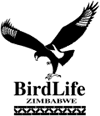Country/territory: Zimbabwe
IBA criteria met: A3, A4i, A4iii (1998)
For more information about IBA criteria, please click here
Area: 6,180 hectares (61.80 km2)
BirdLife Zimbabwe

| IBA conservation status |
| Year of assessment (most recent) |
State (condition) |
Pressure (threat) |
Response (action) |
| 2015 |
very poor |
very high |
medium |
| For more information about IBA monitoring, please click here |
Site description (2001 baseline)
Situated 30 km west of Harare, in the middle of the Mashonaland plateau, nearly half of this park comprises Lake Chivero (26.3 km² when full; formerly Lake McIlwaine), a water reservoir for the capital which was created by damming the Manyame river. The lake is 9.5 m deep on average and has a triangular shape, with the river entering at the south-east end and leaving at the north-west.
The park has a very attractive appearance, being a mixture of lake, natural woodland, grassland, and some granite kopje outcrops. These culminate in Bushman’s Point at the eastern end. There are many islands in the lake. Several of the kopjes have San (Bushman) paintings on their sheltered surfaces. The topography, however, is basically flat or slightly undulating, except at the north-western side where the Hunyani Hills rise.
The vegetation is almost entirely miombo woodland. The original woodland, particularly on the north bank, was cleared for tobacco farming in the past, but has been regenerating for the past 50 years. Interspersed among the woodlands are many large wooded anthills and areas of grassland. The lake-margins have many patches of reed
Phragmites. The waters of the lake have been invaded by several weeds, including the non-native
Eichhornia, and also
Pistia,
Myriophyllum,
Lagarosiphon,
Azolla and blue-green algae. At times the water seems to be a ‘soup’.
The park is given over mainly to water-sports and activities, in particular motorboats, yachts, skiing, canoeing and fishing. Many sites on the banks are clubs that service these activities. There is a research centre and bird sanctuary on the north bank, and a game park with many introduced game species on the opposite south bank. Both north and south banks have tourist chalets and lodges. Many day-trippers are subsistence fishers, who buy a cheap daily permit. There are 26 species of fish in the lake, including five exotics. Much of the water is drawn off from the lake for the city, and there are tributaries (Marimba, Mukuvisi and Nyatsime) flowing into the Manyame river or the dam itself which have major sewage works on them. Also, the Mukuvisi flows right through the industrial sites of Harare.
Key biodiversity
See Box and Table 3 for key species. No threatened or restricted-range species depend on the park for survival, although Egretta vinaceigula, Falco naumanni and Grus carunculatus do occur very rarely, and Phoenicopterus minor and Circus macrourus may occasionally be seen. There are also c.75 of the nationally vulnerable Struthio camelus. Buphagus erythrorhynchus was successfully translocated to the park in 1991.
The park is on the tourist route for the miombo (Zambezian-biome) specials. Apart from the 11 species in the park that are globally restricted to this biome, another 12 species occur that are restricted to miombo in Zimbabwe at least:
Pseudhirundo griseopyga,
Coracina pectoralis,
Salpornis spilonotus,
Hyliota australis,
Chloropeta natalensis,
Sylvietta whytii (rare),
Cisticola brunnescens cinnamomea,
Anthus similis,
Lamprotornis chloropterus,
Nectarinia cuprea,
Anthreptes longuemarei and
Euplectes macrourus.
Lake Chivero hosts many waterbirds, and c.100 species are on the checklist. At times, thousands occur, as in July 1995, when 15,467 of 52 species were counted, including 2,991
Phalacrocorax africanus, 138
Platalea alba, 3,430
Anas erythrorhyncha, 830
Netta erythrophthalma, 614
Himantopus himantopus and 1,085
Charadrius pecuarius. In the austral winter, many ducks loaf on the dam during their flightless moult. Immediately downstream of Lake Chivero is the larger but shallower Lake Manyame (formerly Robertson) in another recreational park; Manyame usually supports more waterbirds than does Chivero, and in October 1987, for example, 27,077 individuals of 71 species were counted on the two dams, respectively 20,554 and 6,523.
More bird species have been recorded in the park than at any other locality in the country—c.450 species, or two-thirds of Zimbabwe’s avifauna. This is partly because birdwatching has been done there on a regular basis since 1952, and because of its proximity to Harare so that the bird club visits every month. In addition, part of the Ornithological Research Unit of the Parks and Wild Life Conservation Fund has been based at the research centre since 1973.
Non-bird biodiversity: Among mammals, several Ceratotherium simum (LR/cd) occur in the park, and confiscated Manis temminckii (LR/nt), a Specially Protected Species, are usually released into the game park. There is also a wildlife conservancy on the south side which, among other species, supports Alcelaphus lichtensteinii (LR/cd).
Recommended citation
BirdLife International (2024) Important Bird Area factsheet: Robert McIlwaine Recreational Park (Zimbabwe). Downloaded from
https://datazone.birdlife.org/site/factsheet/robert-mcilwaine-recreational-park-iba-zimbabwe on 23/12/2024.